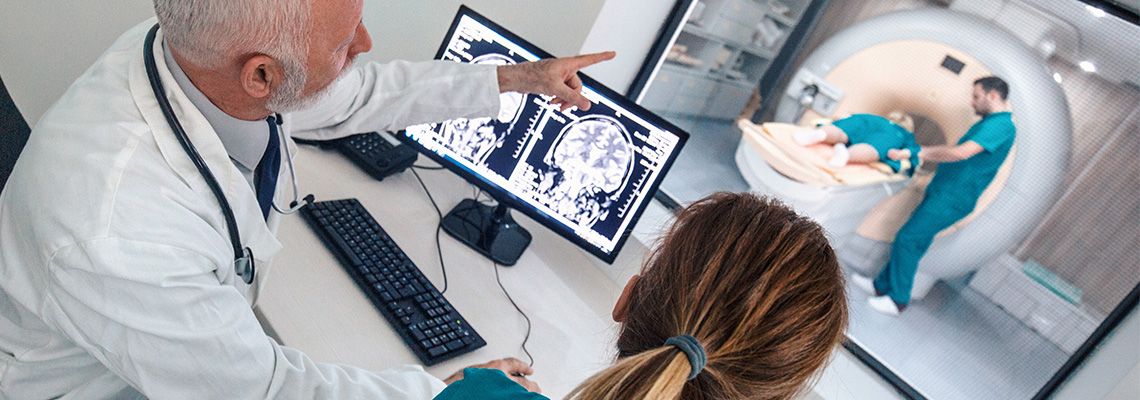
Image-Guided Radiation Therapy Services in Washington, DC
Image-guided radiation therapy (IGRT) is one of the most advanced innovations in cancer technology available. There are many factors that may contribute to differences between the planned dose distribution and the delivered dose distribution. One such factor is uncertainty in patient position on the treatment unit. IGRT refers to the use of advanced imaging (2D and 3D) to assure that the positioning of the tumor will match the highly conformal dose delivery that can be achieved on state-of-the-art machines.
Tumors can move during treatment because of breathing and other movement within the body. IGRT allows our doctors to locate and track the tumor during treatment. With this technology, we can deliver precise radiation treatment to tumors that shift because of breathing and movement of the bladder and bowels.
GW has a long history of being at the forefront of the development of techniques to assure highly accurate dosing to the tumor. The department was one of the first to implement CT scans in the treatment of patients with brachytherapy to ensure accurate dose delivery. Today, the department has some of the most diverse technological capabilities in the world and all systems have advanced IGRT capabilities. Our breadth of experience ensures that software and techniques are used to the best of their capacities.
Portal imaging (MV/kV ports)
Portal imaging is the acquisition of 2D images using a radiation beam (or kilovoltage device) that is delivering radiation treatment to a patient. If all of the radiation beam is not absorbed or scattered in the patient, the portion of the beam that passes through the patient may be measured and used to produce images of the patient's anatomy. IGRT would include matching planar images with digital reconstructed radiographs (DRRs) from the planning CT.
CT
Computed tomography is a medical imaging method employing tomography where digital geometry processing is used to generate a three-dimensional image of the internal structures of an object from a large series of two-dimensional X-ray images taken around a single axis of rotation.
kV-CBCT
ConeBeam computed tomography is an image-guided system which uses regular range X-rays. The device is mounted perpendicular to the treatment beam.
Contact Us
For image-guided radiation therapy, contact GW Radiation Oncology
Main Phone: (202) 715-5097
Fax: (202) 715-5136
